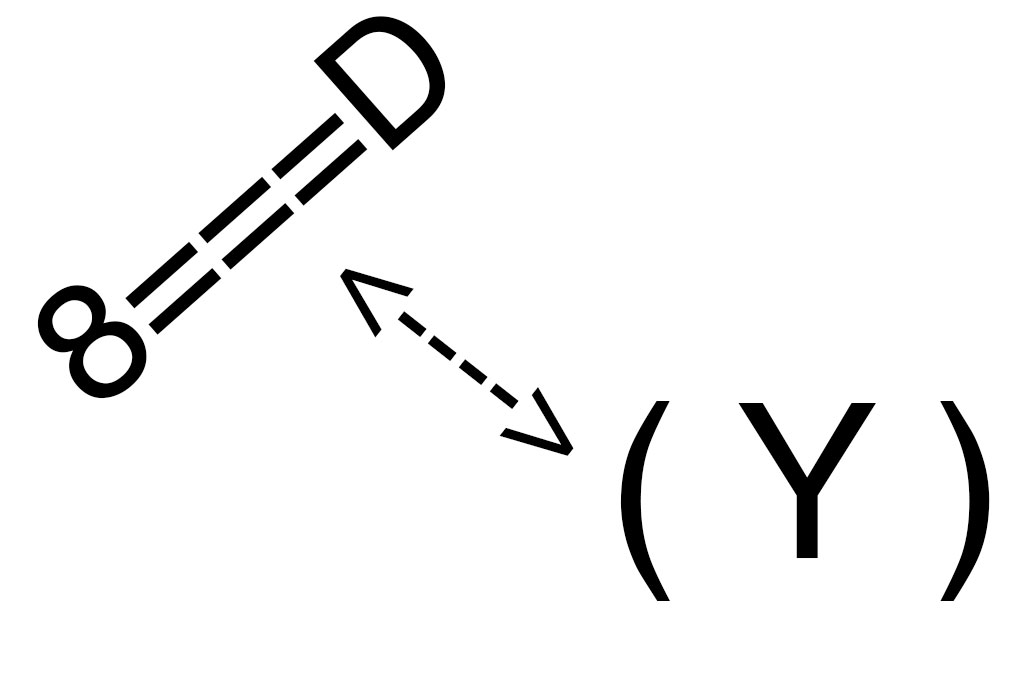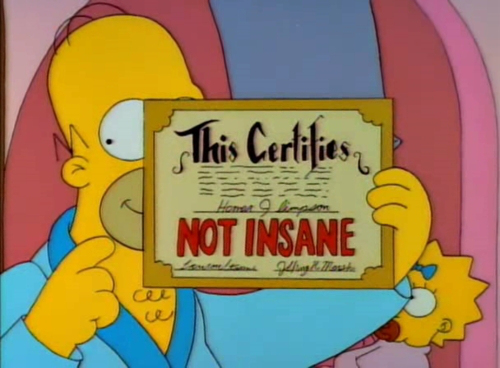“What’s A Girl Gotta Do To Get A Vagina Around Here?”: A Transwoman’s Guide To Transition, Part II
Part two of a two-part series.

This is part two of a two-part series; you can find part one here.
–
In the first part of this article, we had a look at what it feels like to be transgender, and the sort of soul searching one has to do in order to make the decision to change their sex.
In this part, we’re going to look at the steps one needs to take to medically alter their body so that they can comfortably live their life as the gender they identify with. Again, since I’m a transwoman, most of the examples and experience I draw from involves male to female transition. Sorry if you feel left out, transdudes.
–
Step 4: Hormone Replacement Therapy (HRT)
So, you want to look and feel like the gender you identify with and live the rest of your life that way. The most significant step you can take is to change the sex hormones in your body.
Human bodies have the capacity to go through both male and female puberties. The sex hormones released by our gonads determine how the body grows and develops during our adolescence. Bodies that are exposed to oestrogen will grow breasts and hips; bodies that are exposed to testosterone grow beards and bigger muscles. It doesn’t matter if the individual was born male or female; all human bodies have the potential to go through either puberty.

The ways in which an individual can pursue gender transition vary from country to country. In Australia, if you want to pursue medical transition you will need to get assessed by a psychiatrist. Once you’re diagnosed with Gender Dysphoria you can then be referred to an Endocrinologist to begin HRT.
Gender dysphoria is not a mental illness and personally, I was a bit resentful that I had to see a shrink so that I could pursue a treatment for a physical malady. Nevertheless, I did it, and I am now certified both sane, and trans.

When you begin HRT, you do two things. You artificially introduce the desired sex hormone into your body, and you block the production of your old hormones.
If you manage to do this when you’re young enough, you can avoid the effects of an undesired puberty. If, however, you’re older when you transition, HRT can reverse some effects of your first puberty, like muscle mass, body hair growth and fat distribution. Unfortunately there’s a few that you’re going to have to live with, including the shape and size of your bones, the presence of breasts or facial hair, the pitch of your voice, an adam’s apple, or male pattern baldness. There are a few ways you can cover these up too, but we’ll get to them later.
HRT will also have a significant affect on your libido and emotions. Male to female transexuals tend to experience a drop in their libido, and experience a sense of relative calmness and a heightened connection to their emotions.
For female to male transsexuals, it’s the opposite: they get the horn and the rage.

HRT can also affect the size of the genitals, fertility, and the sensation and experience of orgasm. Some male to female transexuals report that the orgasm becomes prolonged, that they can multiple orgasm, and that it becomes more of a full body experience as opposed to the old shudder and squirt scenario.
The changes take place slowly (it can take up to two years for things to settle down), but they can be super significant. When you’re a while into HRT, it’s mandatory to post an inspiring collage of transition photos set to terrible music on YouTube.
Oh, and this is where I’m at, by the way. Just at the start of HRT, there’s nothing to report yet but I’m really looking forward to having diminished upper body strength and the capacity for super orgasms with no desire to experience them.
–
Step 5: Cosmetic Procedures
So, about those permanent puberty changes we mentioned earlier: there are a few things that you can do. Some of the treatments are pretty simple, and some are quite extreme.
Simple treatments that can help to hide your genetics include styling your hair, learning how to apply makeup, vocal training, and wearing outfits that work with your body shape.
If you’ve got a beard or body hair, you can get rid of that through the power of laser hair removal, which is relatively inexpensive but not a perfect solution. It usually takes 8-10 sessions, 4-8 weeks apart, and it’s most effective on people with fair skin and dark hair. They can’t do it over the top of a tattoo and it’s pretty much ineffective on blonde, white and red hair; sorry rangas, no lasers for you.

Electrolysis — electrocuting individual hair follicles — is your other option for hair removal. It’s equally effective across all hair and skin types, but it’s more painful, costly and time consuming than laser.
If you’re balding or have a really obviously male hairline you can look at getting hair transplants where they remove hair from the back of your head and stick it in the balding bits. Hair transplants are expensive and can leave you with some pretty nifty scars. If you’re really bald or can’t afford transplants, then you’re going to want to invest in a fabulous wig collection. Don’t worry, very convincing and stylish wigs are available.
Breast growth from HRT can often be underwhelming, especially for a girl who wants to balance out broad shoulders. Some transwomen consider breast augmentation; some also get a trachea shave to hide those Adam’s apples, or hip and butt implants for hips and butts.
Having a female face is the desire of many transwomen. The shape of one’s nose, jawline and brow can often hinder one’s ability to pass, or trigger dysphoria. Some transwomen choose to undergo facial feminisation surgery (FFS). FFS can include a number of different cosmetic procedures, designed to bring one’s facial features closer in shape and size to that of a typical female.
There’s not much that you can do about your height, the width of your shoulders or the size of your hands and feet, but it’s important to keep in mind that there’s plenty of body variance in ciswomen. Plenty of ladies have big chins or feet. So don’t fret too much.
That said, you can avoid this step entirely if you start HRT as a teenager. Our society is becoming more comfortable with the idea of teenagers transitioning, so hopefully in the future all transpeople will have appropriately sized hands and boobs.
–
Step 6: Sex Reassignment Surgery (SRS)

For all the miracles that HRT can bring about, no amount of hormones will make you grow a vagina or penis, or turn you testes into ovaries or vice versa. If you want to have the genitals of the gender you identify with, you’ll need to look into SRS.
This is the big one. And whilst it’s often the first thing that pops into people’s heads when you mention gender transition, it is pretty much the last thing on a transexuals “to-do” list, if it is even on the list at all.
The status of your junk is a reasonably private affair, and it is pretty easy to live your life without anyone being able to notice whether you’ve got an innie or an outie. Many transexuals are perfectly happy to not have SRS. Then again, the freedom to get changed at the gym, wear a swimming costume, pee from a different position or enjoy sexual relations with the genitals of your identified gender can be very desirable.
Contrary to popular belief, there’s not a lot of difference between the tissue that makes up male and female genitalia. It’s basically all nerves and meat, and a talented surgeon has the ability to rearrange those nerves and meat into a different shape.

The procedures are, obviously, different for transwomen and transmen; they are also irreversible. Most countries require you to live for a year, full-time, as your identified gender role before you are able to pursue SRS. I’m not going to go into the nuts (hah!) and bolts of the actual surgery (there are plenty of graphic videos on YouTube, if you’re curious), but I will say that the surgeries are long, risky and complicated, and that there’s also a lot of after-care involved.
A post-operative transwoman’s vagina can be more or less indistinguishable from that of a genetic female; they look, feel, smell and even taste pretty damn genuine. It’s unlikely for a sexual partner or even a gynaecologists to recognise if a woman has had SRS from a quality surgeon. Unfortunately science is not yet able to create ovaries or a uterus, so transwomen can’t menstruate or have babies (although they can breastfeed).
The results of SRS are better for transwomen than transmen. Suffice to say that current medical science is okay but not awesome at making wieners.
–
Step 7: Live Your Life
When all’s said and done, you’re likely to be in transition for a year or two. Once your hormones have settled down, your body has stopped changing and you’ve gone through surgery, you basically just get on with it.
I’ve followed a number of transgender bloggers, and one thing I’ve noticed is that they’re generally very active during their transition, are particularly active after surgery but then, after a few months, their posts become more and more infrequent. Six or so months later they’ll pop in to apologise for not posting in a while, and six months after that they’ll announce that they don’t have anything more to say, because they don’t really think about transition anymore.
I cannot imagine what it would be like to feel that way. I’ve felt gender dysphoria my entire life. I have made the same wish, every year, when I’ve blown out the candles on my birthday cake. I cannot remember a time in my life when the idea that I should have been born a girl didn’t preoccupy my thoughts.
I am utterly terrified about what lies in store for me over the next few years, but the world is a better place today that it was yesterday for transpeople, and it’s going to be even better tomorrow. I’ve put together a sweet playlist to get me through it, and I am so very, very hopeful.
–
Get Some Support:
NSW – The Gender Centre
VIC – Transgender Victoria
SA – Carrousel Club
QLD – Australian Transgender Support Association Queensland
ACT – A Gender Agenda
TAS – Working it Out
WA – Freedom Centre
–
Nicola Fierce is a pseudonym. Nicola is a transwoman in her thirties who is in the middle of transition. She currently lives as a somewhat famous man. This will change when she’s good and ready.